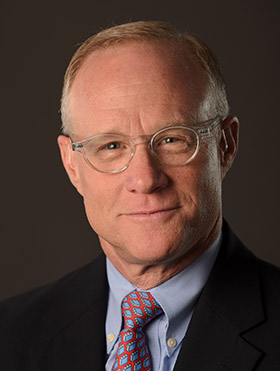Reflections of a Former St. Louis Fed Director: Steven Lipstein

The 12 Reserve Banks, including the St. Louis Fed, reach out to their districts in many ways. The most formal and enduring way is through their boards of directors. Periodically, the On the Economy blog features thoughts and experiences of former directors. This post is by Steven Lipstein, who recently retired after 18 years as CEO of BJC HealthCare, the St. Louis region’s largest employer.
My tenure on the board of directors for the Federal Reserve Bank of St. Louis began in January 2007. I served as deputy chair of the board in 2008 and as chair from 2009-11. In 2008, I was a member of the board’s executive search committee that would recommend Jim Bullard as the 12th president of the St. Louis Fed.
Serving on the board of a Fed bank is a unique privilege. There are only 12 district banks in the U.S., and each of these 12 banks has only nine directors, meaning that there are only 108 Fed district bank directors at any given time.
Who Sits on Federal Reserve Bank Boards of Directors?
Directors of district banks are not political appointees. By law, each district bank board has nine members:
- Three Class A directors, who are bankers elected by small-, medium- and large-cap member banks as their representatives
- Three Class B directors, who cannot be officers, directors or employees of banks and are elected by member banks as representatives of nonbanking interests
- Three Class C directors, who are appointed by the Fed’s Board of Governors in Washington, D.C., to represent the public and who cannot own stock in or serve as officers, directors or employees of banks.
Only Class C directors may serve as deputy chair or chair of the board. And, only Class B and C directors—the nonbankers on the board—are involved in selecting Reserve Bank presidents (subject to the approval of the Board of Governors).
Members of the Board of Governors in Washington are appointed by the U.S. president and confirmed by the Senate. They serve staggered 14-year terms, and once appointed, cannot be removed because of their policy views.
These complex procedures for selecting Fed leadership are set forth in the Federal Reserve Act and are expressly intended to create a governance model for the central bank that is independent of the country’s political framework. This ensures a vital separation between those who set the nation’s monetary (interest rate) policy and our elected representatives who establish fiscal (taxing and spending) policy.
Importance of Fed Independence
Why is the Fed’s independence from political considerations so important? Let’s examine what happened to the nation’s economy during my brief five-year tenure on the board of the St. Louis Fed:
- In January 2007, the Dow Jones Industrial Average was around 12,400. Two years later, it would find a low mark of just 6,500. In between, investors in subprime mortgages took heavy losses.
- Bear Stearns was bought by JPMorgan.
- The U.S. government took over Fannie Mae and Freddie Mac.
- Lehman Brothers filed for bankruptcy protection.
- Congress legislated $700 billion for the Troubled Assets Relief Program.
- The U.S. Treasury and Fed would go on to commit more than $180 billion to stabilize American Insurance Group, better known as AIG.
- Real GDP fell 8.2 percent in the fourth quarter of 2008.
- The national unemployment rate reached 10 percent by the fall of 2009.
In thoughtful and deliberate response to these myriad economic crises, the Fed initiated an extensive period of expansionary monetary policy, lowering the Fed’s policy rate to near zero and increasing its total assets from about $870 billion in 2007 to over $4 trillion by the end of 2013.
Importance of Working Together
At the time, I found it reassuring to know that the framers of our monetary policy and those in positions of responsibility for curing the weaknesses of our banking sector were not operating in isolation.
The flow of information from Fed branch offices to head offices to the Board of Governors to the Federal Open Market Committee (FOMC) was continuous. Dialogue was open, and those who had to make timely and difficult decisions were not thinking about political consequences and the next election. Rather, they focused on the real-life economic consequences for homeowners, investors, employees and customers and how to implement remedies that would be effective, even if politically unpopular.
Americans can be thankful that during the Great Recession of 2007-09 and its aftermath the nation’s monetary policy and eventual return to economic stability was guided by the likes of Ben Bernanke, Jim Bullard and an FOMC operating with input, advice and counsel from the boards of directors of the 12 Fed banks.
Additional Resources
Citation
Steven Lipstein, ldquoReflections of a Former St. Louis Fed Director: Steven Lipstein,rdquo St. Louis Fed On the Economy, March 13, 2018.
This blog offers commentary, analysis and data from our economists and experts. Views expressed are not necessarily those of the St. Louis Fed or Federal Reserve System.
Email Us
All other blog-related questions

